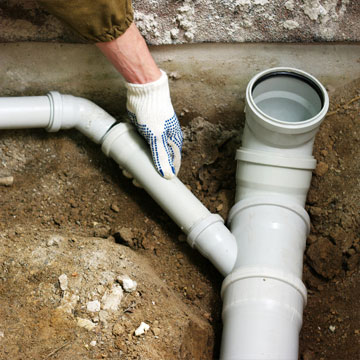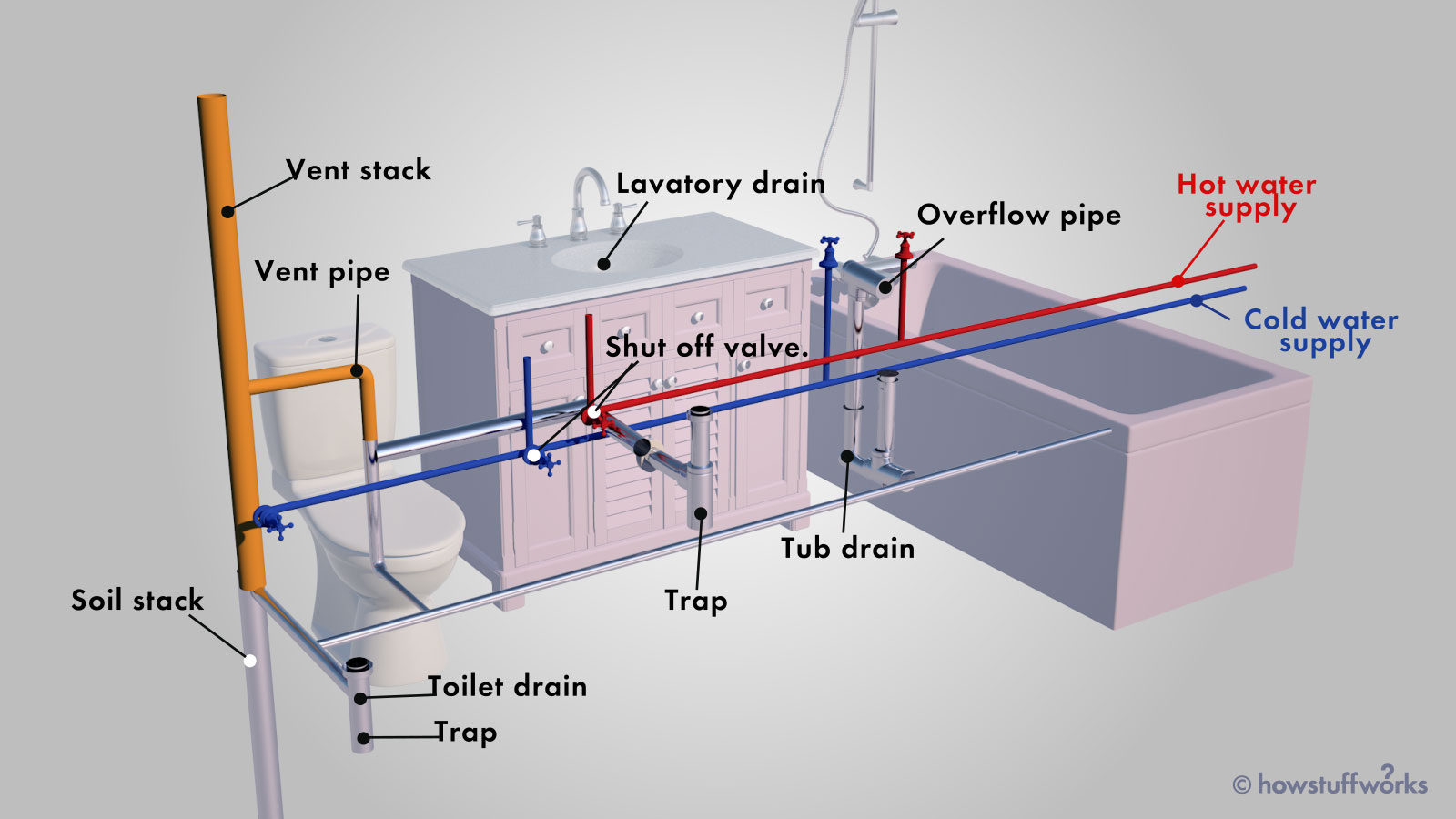Just how do you really feel on the subject of Anatomy of a House: Understanding the Components?

Understanding just how your home's pipes system functions is necessary for every single property owner. From providing tidy water for alcohol consumption, cooking, and bathing to safely getting rid of wastewater, a well-maintained pipes system is critical for your family members's health and wellness and comfort. In this thorough guide, we'll check out the detailed network that comprises your home's pipes and deal pointers on upkeep, upgrades, and handling usual problems.
Introduction
Your home's pipes system is greater than simply a network of pipes; it's a complex system that ensures you have accessibility to tidy water and reliable wastewater elimination. Recognizing its components and just how they collaborate can help you prevent costly fixings and ensure everything runs efficiently.
Fundamental Components of a Plumbing System
Pipelines and Tubing
At the heart of your pipes system are the pipelines and tubes that bring water throughout your home. These can be made of numerous materials such as copper, PVC, or PEX, each with its advantages in regards to resilience and cost-effectiveness.
Components: Sinks, Toilets, Showers, and so on.
Components like sinks, bathrooms, showers, and bathtubs are where water is made use of in your home. Understanding exactly how these fixtures attach to the plumbing system aids in identifying troubles and planning upgrades.
Shutoffs and Shut-off Points
Valves control the flow of water in your pipes system. Shut-off valves are crucial throughout emergency situations or when you need to make repairs, permitting you to separate parts of the system without interrupting water flow to the whole residence.
Water System System
Main Water Line
The major water line links your home to the metropolitan water system or a personal well. It's where water enters your home and is dispersed to different fixtures.
Water Meter and Pressure Regulator
The water meter measures your water use, while a pressure regulator ensures that water moves at a secure pressure throughout your home's plumbing system, protecting against damages to pipelines and fixtures.
Cold Water vs. Hot Water Lines
Recognizing the distinction between cold water lines, which provide water straight from the primary, and hot water lines, which carry warmed water from the hot water heater, assists in troubleshooting and planning for upgrades.
Drain System
Drain Piping and Traps
Drain pipelines carry wastewater far from sinks, showers, and bathrooms to the sewer or sewage-disposal tank. Catches stop drain gases from entering your home and also catch particles that could create blockages.
Ventilation Pipelines
Ventilation pipelines enable air into the drain system, preventing suction that can slow water drainage and trigger catches to vacant. Appropriate ventilation is crucial for keeping the stability of your plumbing system.
Importance of Proper Water Drainage
Making certain appropriate drain protects against back-ups and water damages. Frequently cleaning up drains and keeping catches can avoid expensive repair work and expand the life of your pipes system.
Water Furnace
Sorts Of Hot Water Heater
Hot water heater can be tankless or standard tank-style. Tankless heating units heat water as needed, while containers save warmed water for instant use.
Upgrading Your Plumbing System
Reasons for Upgrading
Upgrading to water-efficient components or changing old pipes can enhance water quality, lower water bills, and raise the worth of your home.
Modern Pipes Technologies and Their Benefits
Explore technologies like clever leakage detectors, water-saving commodes, and energy-efficient hot water heater that can conserve money and reduce ecological influence.
Expense Considerations and ROI
Compute the upfront prices versus long-lasting financial savings when thinking about plumbing upgrades. Numerous upgrades spend for themselves with decreased energy expenses and less repair work.
Exactly How Water Heaters Connect to the Plumbing System
Recognizing exactly how hot water heater attach to both the cold water supply and hot water circulation lines helps in identifying issues like inadequate warm water or leaks.
Upkeep Tips for Water Heaters
Regularly flushing your hot water heater to remove sediment, examining the temperature setups, and inspecting for leaks can extend its life expectancy and enhance power effectiveness.
Common Pipes Issues
Leakages and Their Reasons
Leaks can happen due to maturing pipes, loosened fittings, or high water pressure. Resolving leaks quickly prevents water damages and mold and mildew growth.
Blockages and Blockages
Blockages in drains pipes and commodes are typically triggered by flushing non-flushable items or an accumulation of oil and hair. Making use of drain screens and bearing in mind what goes down your drains can stop clogs.
Signs of Plumbing Issues to Expect
Low tide stress, slow-moving drains, foul odors, or unusually high water bills are signs of prospective plumbing issues that need to be resolved immediately.
Pipes Upkeep Tips
Normal Inspections and Checks
Schedule annual plumbing evaluations to capture issues early. Look for signs of leaks, corrosion, or mineral accumulation in faucets and showerheads.
DIY Maintenance Tasks
Easy tasks like cleansing tap aerators, looking for bathroom leakages utilizing color tablet computers, or insulating exposed pipelines in cold climates can prevent major plumbing issues.
When to Call a Professional Plumbing Professional
Know when a plumbing problem calls for specialist experience. Trying intricate fixings without correct knowledge can lead to even more damage and higher fixing costs.
Tips for Lowering Water Usage
Straightforward routines like dealing with leakages promptly, taking much shorter showers, and running full lots of washing and dishes can preserve water and lower your utility bills.
Eco-Friendly Pipes Options
Consider lasting plumbing products like bamboo for flooring, which is durable and environment-friendly, or recycled glass for countertops.
Emergency situation Readiness
Steps to Take Throughout a Plumbing Emergency situation
Know where your shut-off valves lie and exactly how to turn off the supply of water in case of a ruptured pipe or significant leak.
Relevance of Having Emergency Calls Useful
Maintain contact info for neighborhood plumbings or emergency situation solutions easily offered for quick action during a plumbing dilemma.
Ecological Impact and Preservation
Water-Saving Components and Appliances
Mounting low-flow faucets, showerheads, and bathrooms can substantially minimize water usage without compromising efficiency.
Do It Yourself Emergency Fixes (When Suitable).
Short-lived fixes like using air duct tape to spot a leaking pipe or placing a container under a leaking tap can minimize damage up until a specialist plumbing professional arrives.
Final thought.
Recognizing the makeup of your home's pipes system encourages you to keep it effectively, saving time and money on repair services. By complying with normal upkeep routines and staying notified regarding contemporary pipes innovations, you can guarantee your pipes system runs successfully for several years ahead.
Understanding Your Home Plumbing System: A Comprehensive Guide
Plumbing System: The Lifeline of Your Home
At its core, the plumbing system is designed to perform two primary functions: bring fresh water into your home and remove wastewater. The system is a network of pipes, fixtures, and other components that transport water and sewage. Residential plumbing systems include potable water supply lines, drain-waste-vent (DWV) systems, and various plumbing fixtures that make water use in daily tasks possible.
Key Components:
Water Supply: This part of your plumbing system brings municipal water into your home, passing through the main water supply line. It s responsible for supplying all water needs, from drinking to bathing.
Drainage System: It carries waste and water away from your home to the sewer or septic system. This system includes all the piping within your home that leads to external sewage or septic systems.
Vent System: An essential yet often overlooked component, the vent system allows sewer gases to escape and lets air into the drainpipes, ensuring water and waste move correctly through the system.
Fixture: More Than Just Taps and Toilets
Plumbing fixtures are the most interactive parts of the plumbing system, including faucets, showers, toilets, and sinks. Each fixture is connected to the plumbing system and plays a role in either the delivery of freshwater or the disposal of waste and wastewater.
Types of Fixtures:
Faucets and Sinks: Used for washing hands, dishes, and other daily water needs. Toilets: Dispose of human waste through the sewage system. Bathtubs and Showers: Provide bathing facilities, requiring both hot and cold water supply. Water Supply: The Source of Life
The water supply system is a critical component, ensuring that potable water is available throughout your home for various uses, including drinking, cooking, and cleaning. This system consists of pipes that distribute water to different parts of the house, controlled by valves to regulate the water flow.
Types of Plumbing: Materials and Methods
Various types of plumbing systems and materials are used in residential settings, each with its advantages and applications. From copper and PVC pipes for water supply to cast iron and ABS for drainage, the choice of materials can impact the longevity and efficiency of your plumbing system.
https://intownplumbingtx.com/articles/home-plumbing-system-guide/

As a serious person who reads on , I assumed sharing that piece of content was a good thing. Feel free to pause to promote this article if you enjoyed it. Many thanks for taking the time to read it.
Call Today